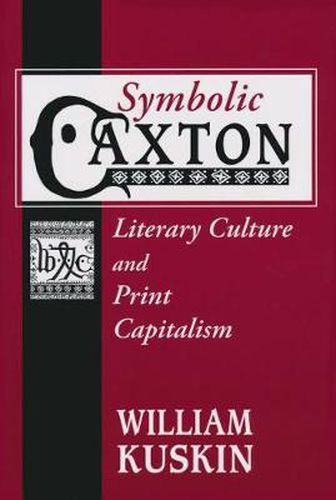Readings Newsletter
Become a Readings Member to make your shopping experience even easier.
Sign in or sign up for free!
You’re not far away from qualifying for FREE standard shipping within Australia
You’ve qualified for FREE standard shipping within Australia
The cart is loading…






Symbolic Caxton is the first study to explore the introduction of printing in symbolic terms. It presents a powerful literary history in which the fifteenth century is crucial to the overall story of English literature. William Kuskin argues that the development of print production is part of a larger social network involving the political, economic, and literary systems that produce the intangible constellations of identity and authority. For Kuskin, William Caxton (1422-1491), the first English printer, becomes a unique lens through which to view these issues. Kuskin contends that recognizing the fundamental complexity inherent in the transformation from manuscript to print-the power of literature to formulate its audience, the intimacy of capital and communication, the closeness of commodities and identity-makes possible a clear understanding of the way cultural, bibliographical, financial, and technological instruments intersect in a process of symbolic production.
While this book is the first to connect the contents of late medieval literature to its technological form, it also speaks to contemporary culture, wrestling with our own paradigm shift in the relationship between literature and technology.
$9.00 standard shipping within Australia
FREE standard shipping within Australia for orders over $100.00
Express & International shipping calculated at checkout
Symbolic Caxton is the first study to explore the introduction of printing in symbolic terms. It presents a powerful literary history in which the fifteenth century is crucial to the overall story of English literature. William Kuskin argues that the development of print production is part of a larger social network involving the political, economic, and literary systems that produce the intangible constellations of identity and authority. For Kuskin, William Caxton (1422-1491), the first English printer, becomes a unique lens through which to view these issues. Kuskin contends that recognizing the fundamental complexity inherent in the transformation from manuscript to print-the power of literature to formulate its audience, the intimacy of capital and communication, the closeness of commodities and identity-makes possible a clear understanding of the way cultural, bibliographical, financial, and technological instruments intersect in a process of symbolic production.
While this book is the first to connect the contents of late medieval literature to its technological form, it also speaks to contemporary culture, wrestling with our own paradigm shift in the relationship between literature and technology.